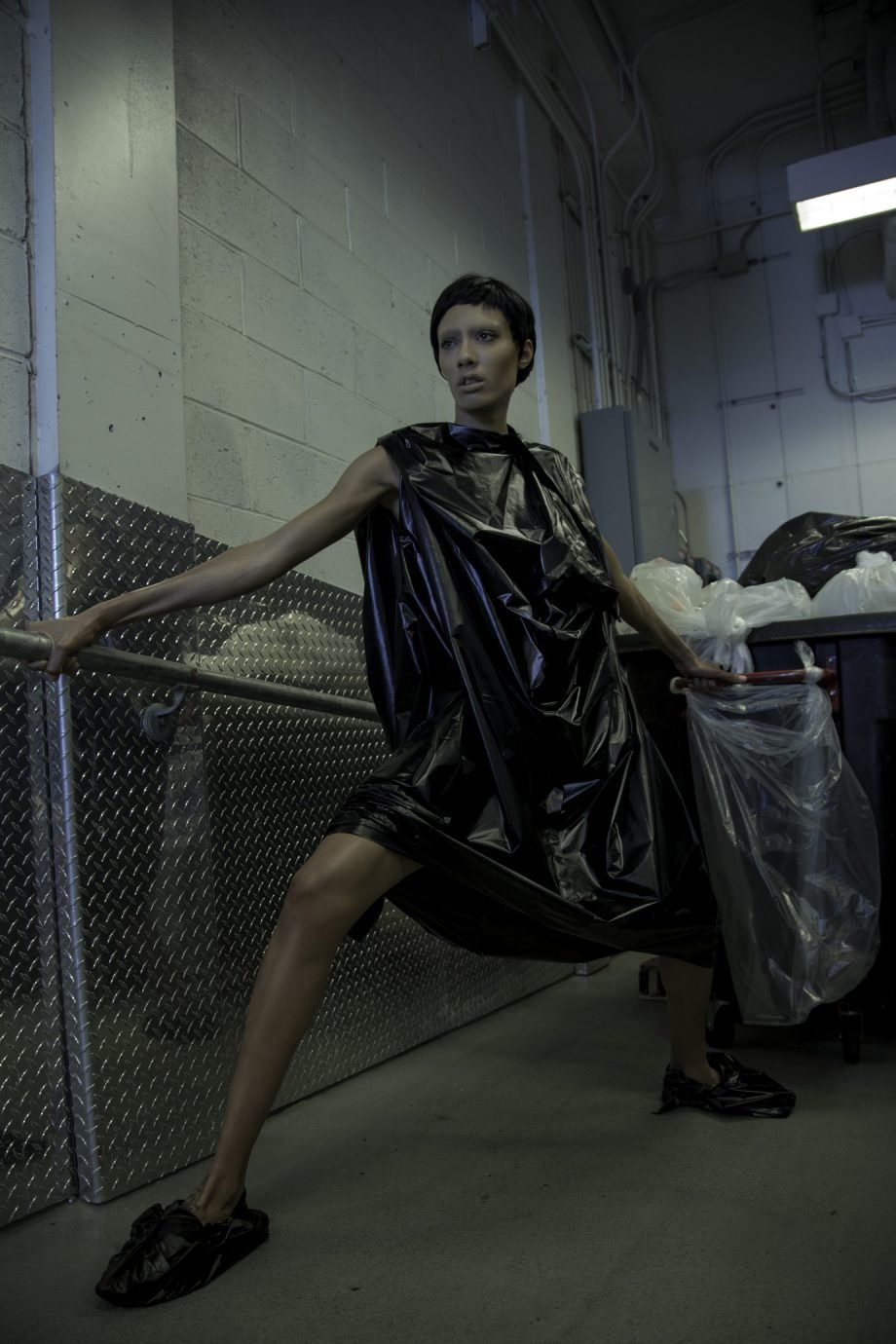Lucile Guilmard: Congratulations on your collection. We’d love to know the inspiration behind it, how did it all come about?
Derek Cheng: PONDER.ER is really based on me and Alex. We are not very masculine boys based on traditional social standards. For every season, we look for a concept that focuses on some stereotypes of masculinity. The latest season is looking at the relationship between gender and speed. We feel that a lot of the more traditional concepts, especially in the media, link men to things that are risky and fast in terms of speed, like car racing. Engaging in sports or anything that could potentially be dangerous is often a way to show off masculinity. Our theme is based on that, and we looked into vintage car-racing suits, venues, and colours. We try to use our old methods by reinterpreting those elements into something soft and genderless. Throughout our career, that is what we have been playing with.
“We are from Hong Kong which is not a free place like London. Our families are quite traditional, so what they taught us is that men should be masculine.” – Derek Cheng
LG: There is so much to talk about. So, you’re addressing toxic masculinity here, right?
Alex Po: That’s the starting point of our brand. We wanted to create a menswear brand that is suitable for all kinds of boys. We don’t fit into that category of wearing masculine suits or very tailored clothes. We like it really soft and elegant. It doesn’t have a structure, it’s very neutral.
LG: Where did the desire to go against the grain come from? I guess it comes from personal experience. Have you ever felt any aggression against this concept personally? Any rejection? What’s your experience with toxic masculinity and its expectations?
DC: We have had these experiences since we were little. We are from Hong Kong which is not a free place like London. Our families are quite traditional, so what they taught us is that men should be masculine. My mum sent me to have Kung Fu lessons when I was very little to be a man, you know. Those lasted for two months. I just didn’t participate, so my mum felt like it’s a waste of money and I could stop going. There were also moments in school where a teacher would say something like, “He’s too soft.”
AP: I remember when I was around ten years old, my teacher spoke to my mum about how I was very well-behaved and academically really strong, but that I should learn how to man up a bit moving forward. That was quite hurtful, even though I was still very young. Looking back, it’s obviously really bizarre for an adult to say something like that in front of a kid. In both Asian and Western culture, I feel, men are being pushed to be a certain way. Our experience in Hong Kong, or other places in Asia, is really tainted by conservatism. Also, speaking about gender-specific issues is not very common. So that all is kind of the start of our journey.


























